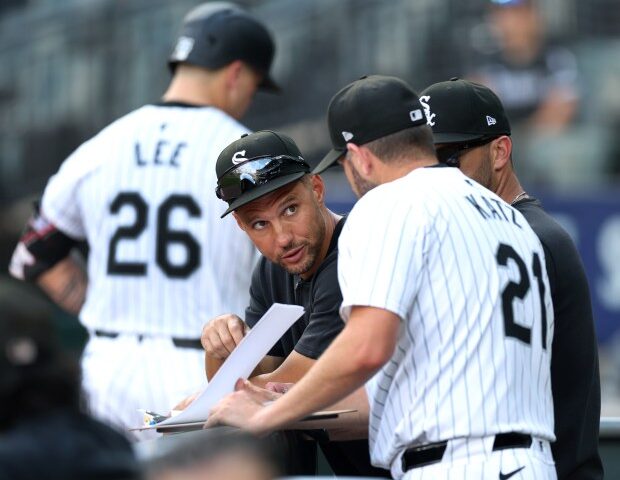DEIR AL-BALAH, Gaza Strip — An Israeli strike on a crowded tent camp housing Palestinians displaced by the war in Gaza killed at least 19 people and wounded 60 early on Tuesday, Palestinian officials said. Israel said it targeted senior Hamas fighters with precise munitions.
The overnight strike hit Muwasi, a sprawl of crowded tent camps along the Gaza coast that Israel designated as a humanitarian zone for hundreds of thousands of civilians to seek shelter from the Israel-Hamas war.
Gaza’s Health Ministry said it confirmed that at least 19 people were killed in the strike, and that the toll may rise as more bodies are recovered. The Civil Defense, first responders who operate under the Hamas-run government, had earlier said 40 people were killed. The Israeli military disputed that toll.
The ministry is also part of the Hamas-run government but its figures are widely seen as generally reliable. It maintains detailed records and its tallies from previous wars have largely coincided with figures from independent researchers, the United Nations and even the Israeli military.
Both the Health Ministry and the Civil Defense did not immediately respond to a request for comment on the discrepancy of their tolls.
Associated Press footage shows three large craters at the scene. First responders dug through the sand and rubble with garden tools and their bare hands, using mobile phone flashlights until the sun came up. They pulled body parts from the sand, including what appeared to be a human leg.
“We were told to go to Muwasi, to the safe area… Look around you and see this safe place,” said Iyad Hamed Madi, who had been sheltering there.
“This is for my son,” he said, holding up a bag of diapers. “He’s 4 months old. Is he a fighter? There’s no humanity.”
One of three hospitals that took in casualties from the strike, Nasser Hospital in Khan Younis, said around two dozen bodies were brought in. An Associated Press cameraman saw 10 bodies in the hospital’s morgue, including two children and three women.
“We were sleeping, and suddenly it was like a tornado,” Samar Moamer told the AP at the hospital, where she was being treated for injuries from the strike. She said one of her daughters was killed and the other was pulled alive from the rubble.
The Israeli military said it had struck Hamas fighters in a command-and-control center embedded in the area. It identified three of the fighters, saying they were senior operatives who were directly involved in the Oct. 7 attack and other recent attacks against Israel and Israeli forces.
Rear Adm. Daniel Hagari, an Israeli military spokesperson, disputed the initial reports of the number of casualties in a post on the platform X, saying they “do not line up with the information available to the (Israeli army), the precise weapons used and the accuracy of the strike.”
Hamas released a statement denying any fighters were in the area, calling the Israeli allegations a “blatant lie.” Neither Israel nor Hamas provided evidence to substantiate their claims.
Israel says it tries to avoid harming civilians throughout the war and blames Hamas for their deaths because the fighters often operate in residential areas and are known to position tunnels, rocket launchers and other infrastructure near homes, schools and mosques.
In July, Israel carried out a strike in the humanitarian zone that killed at least 90 Palestinians. The military said it targeted and killed Mohammed Deif, the shadowy leader of Hamas’ military wing, but Hamas says Deif is still alive.
International law allows for strikes on military targets in areas where civilians are present, provided the force used is proportionate to the military objective — something that is often disputed and would need to be settled in a court, which almost never happens.
The war has caused vast destruction and displaced around 90% of Gaza’s population of 2.3 million, often multiple times. Israeli evacuation orders, which now cover around 90% of the territory, have pushed hundreds of thousands of people into Muwasi, where aid groups have struggled to provide even basic services.
Gaza’s Health Ministry says over 40,900 Palestinians have been killed since the war began. The ministry does not distinguish between civilians and Hamas fighters in its count, but says that women and children make up just over half of the dead. Israel says it has killed more than 17,000 Hamas fighters in the war.
Hamas-led fighters killed some 1,200 people, mostly civilians, in their Oct. 7 attack on Israel. They abducted another 250 people and are still holding around 100 hostages after releasing most of the rest in exchange for Palestinians imprisoned by Israel during a weeklong cease-fire last November. Around a third of the remaining hostages are believed to be dead.
The United States and mediators Egypt and Qatar have spent much of this year trying to broker an agreement for a cease-fire and the release of the hostages, but the talks have repeatedly bogged down as Israel and Hamas have accused each other of making new and unacceptable demands.
Israeli Defense Minister Yoav Gallant told reporters on Monday that conditions are ripe for at least a six-week pause in the fighting that would include the release of many of the hostages still held in Gaza. However, he would not commit to a permanent end to the fighting, as Hamas has demanded, raising questions about the feasibility of a deal.
The war has plunged Gaza into a severe humanitarian crisis, and aid groups have struggled to operate because of ongoing fighting, Israeli restrictions, and the breakdown of law and order. The international authority on the severity of hunger crises said in June that the territory is at high risk of famine.
The main United Nations agency providing aid to Palestinians said Israeli troops stopped a convoy taking part in a polio vaccination campaign for more than eight hours on Monday, despite it coordinating with the military.
UNRWA head Philippe Lazzarini said the staffers who were held had been taking part in the campaign in northern Gaza and Gaza City. He wrote on the social media platform X that the convoy was stopped at gunpoint and that “heavy damages was caused by bulldozers” to the U.N. armored vehicles.
The Israeli military said it held up the convoy based on intelligence indicating the presence of suspected Hamas fighters. It said the suspects were questioned and released.
The vaccination drive, launched after doctors discovered the first polio case in the Palestinian enclave in 25 years, aims to vaccinate 640,000 children during a war that has destroyed the health care system.
Magdy reported from Cairo and Jahjouh reported from Khan Younis, Gaza Strip. Associated Press writers Tia Goldenberg in Jerusalem, Josef Federman in Tel Aviv, Israel, and Jon Gambrell in Dubai, United Arab Emirates, contributed to this report.




